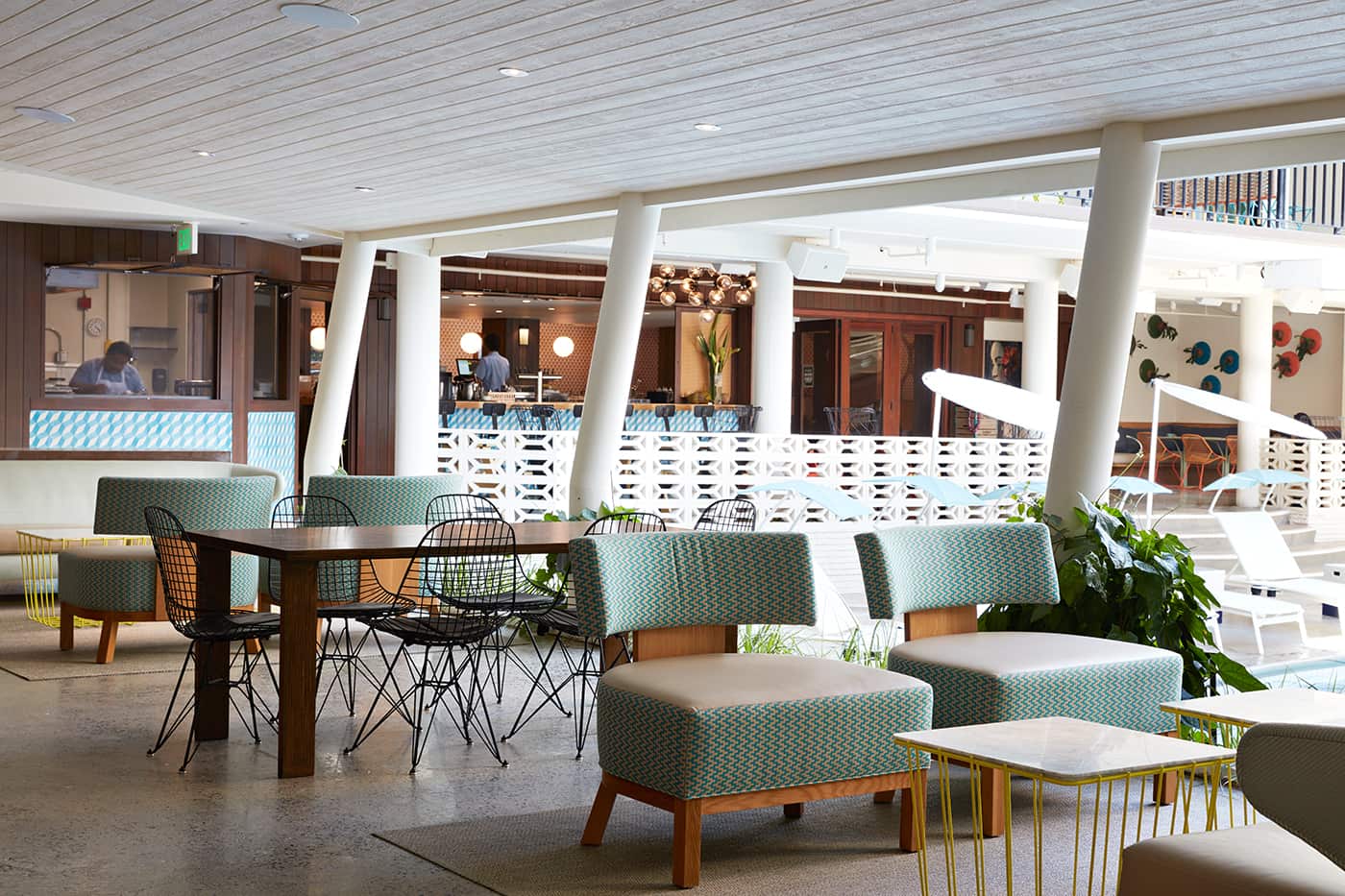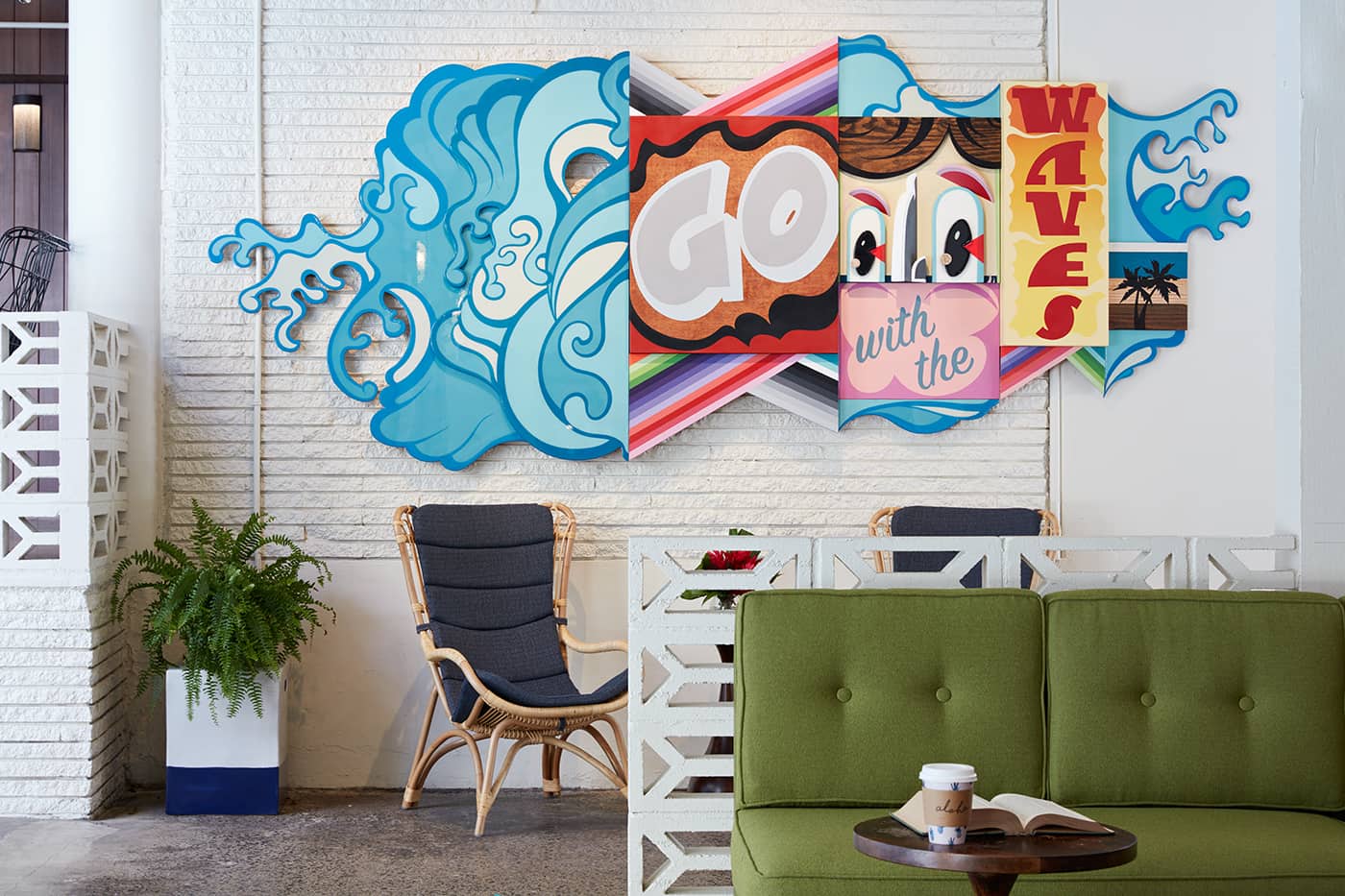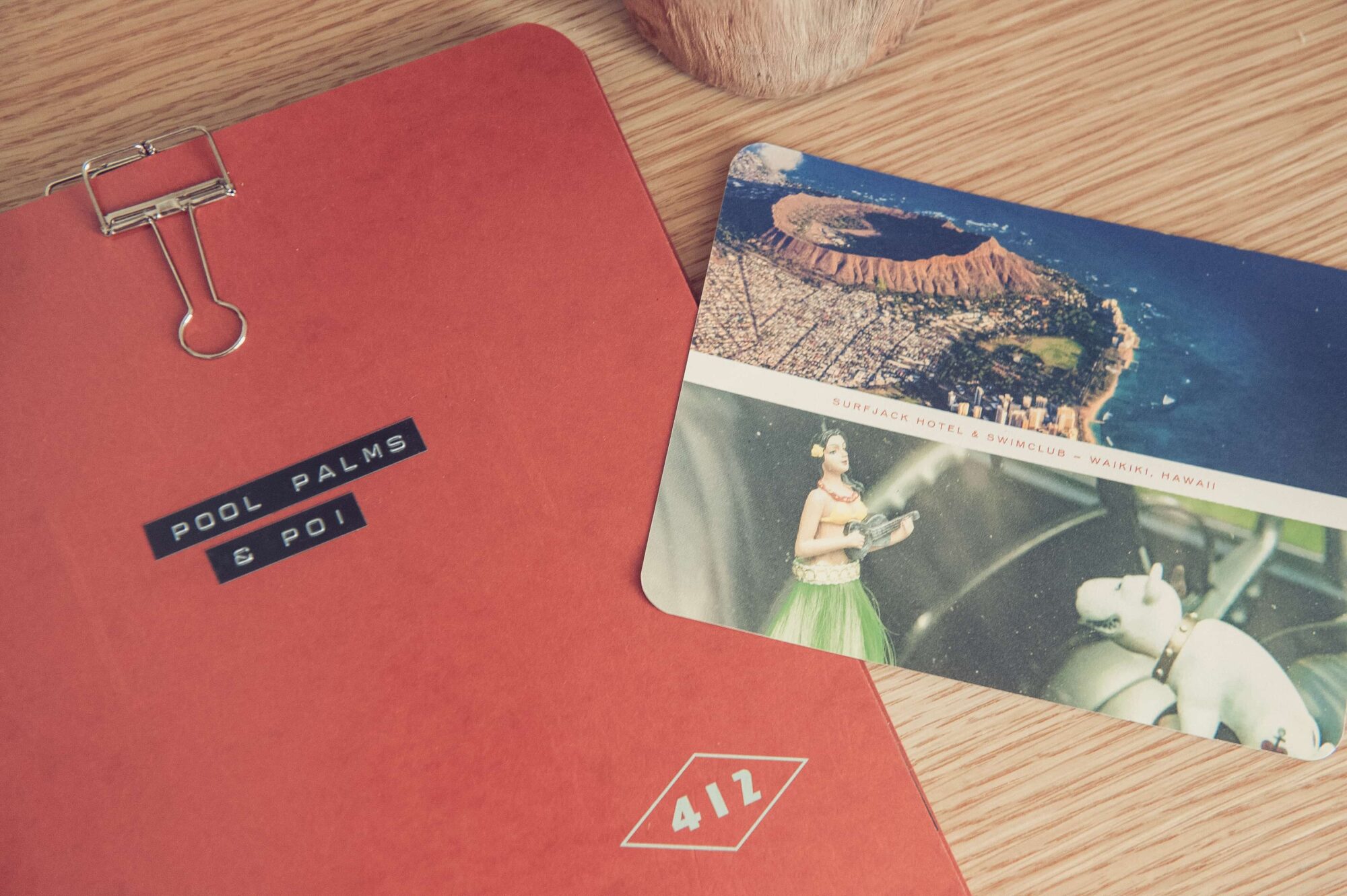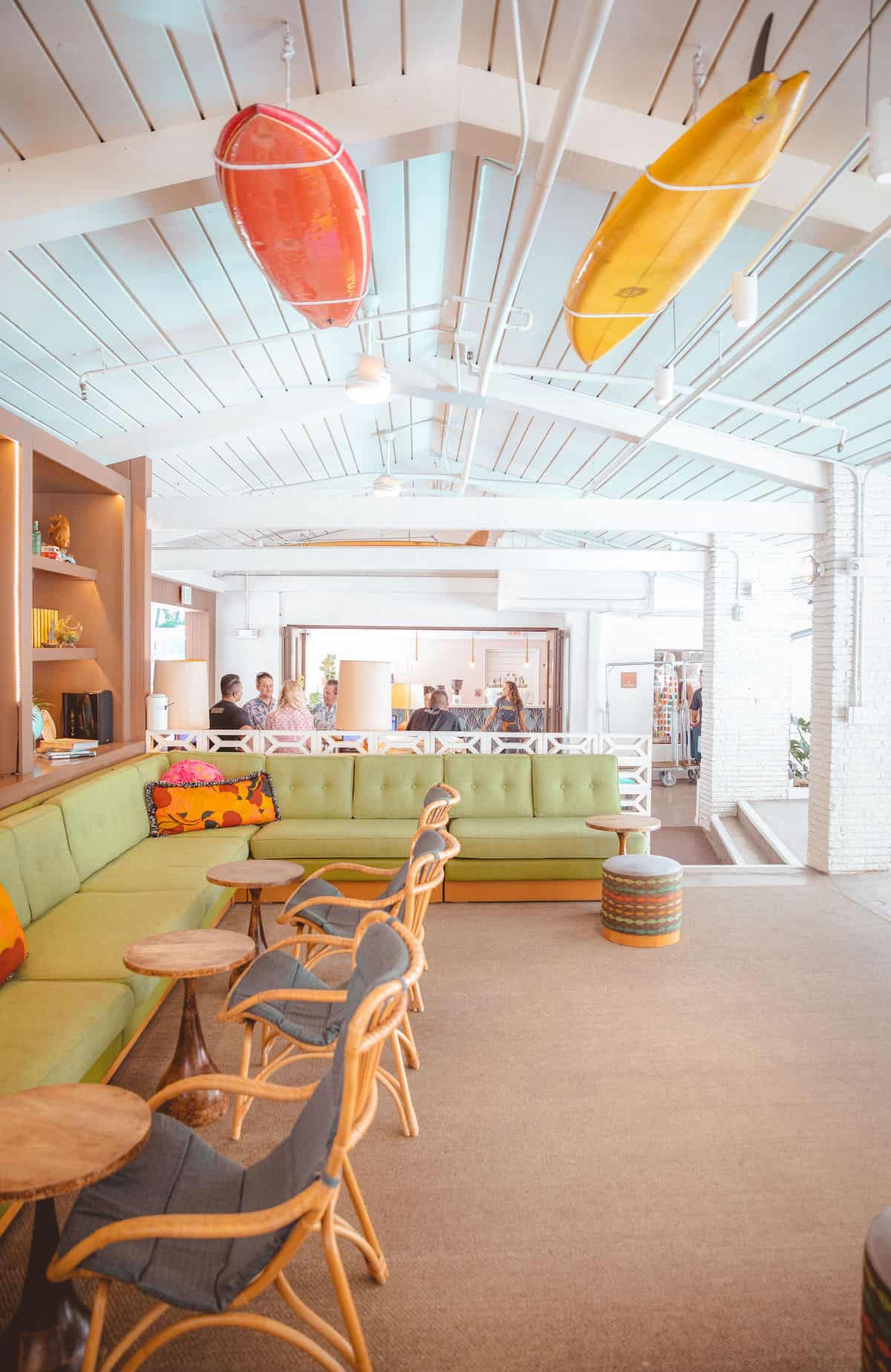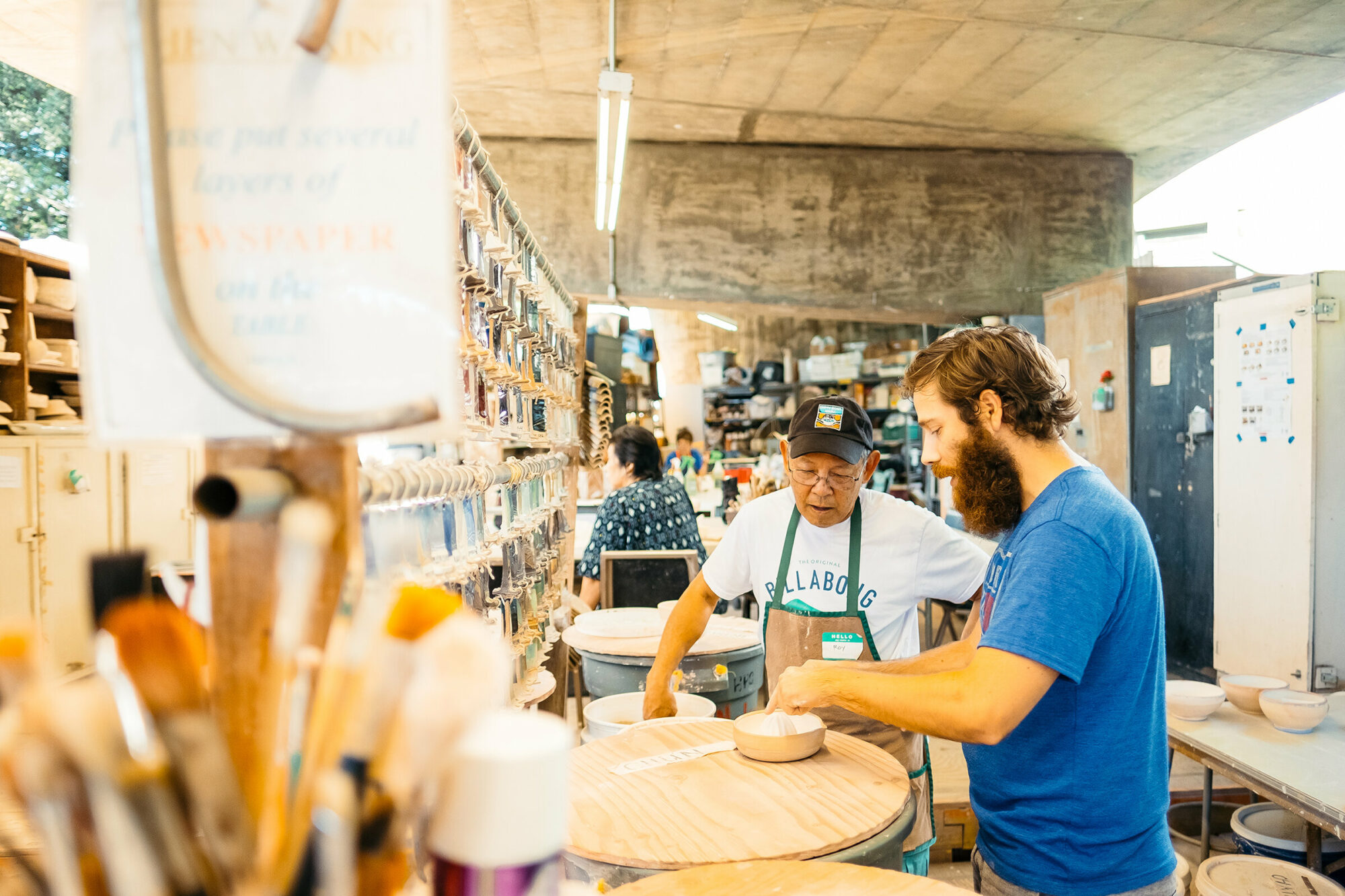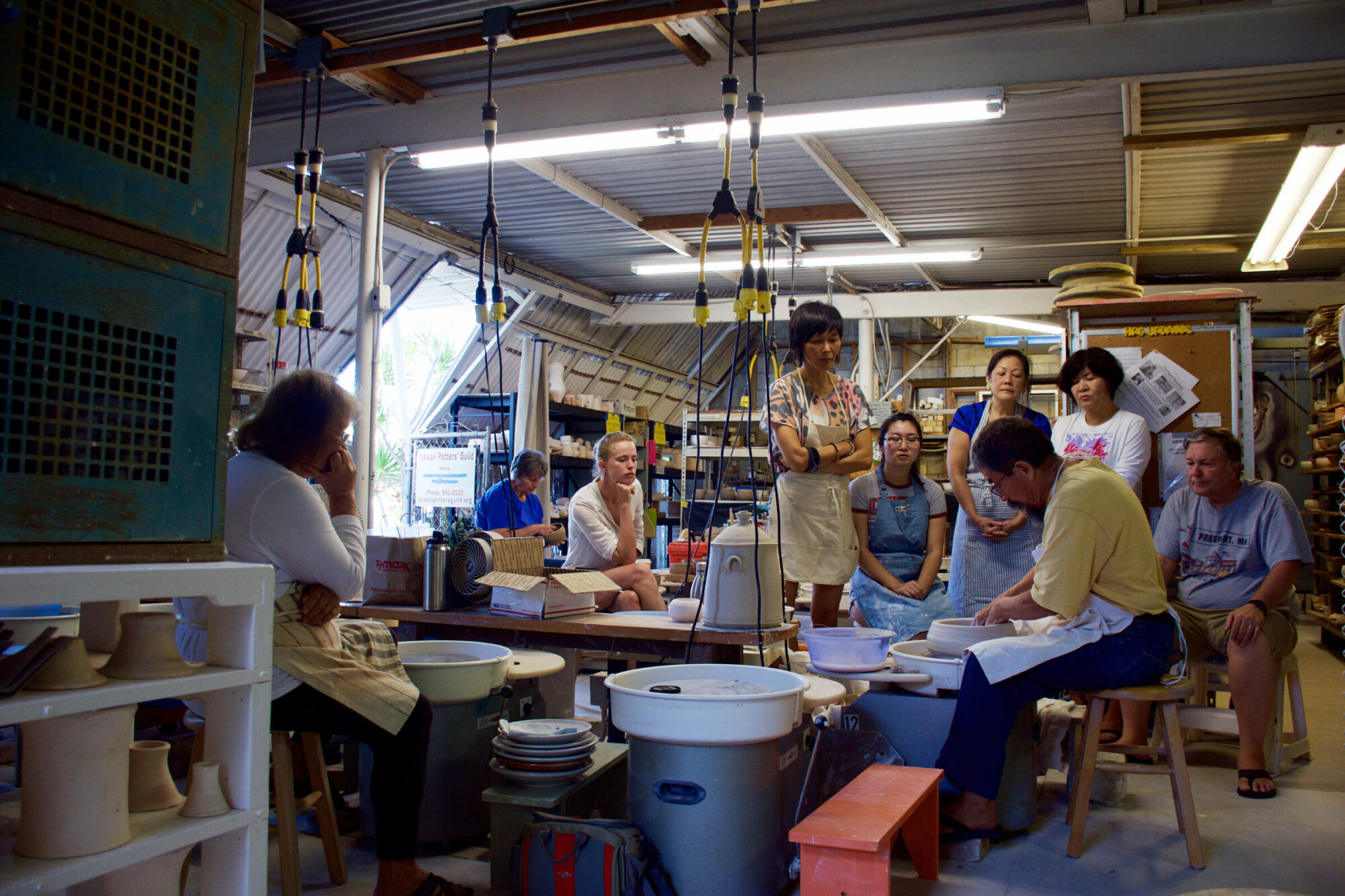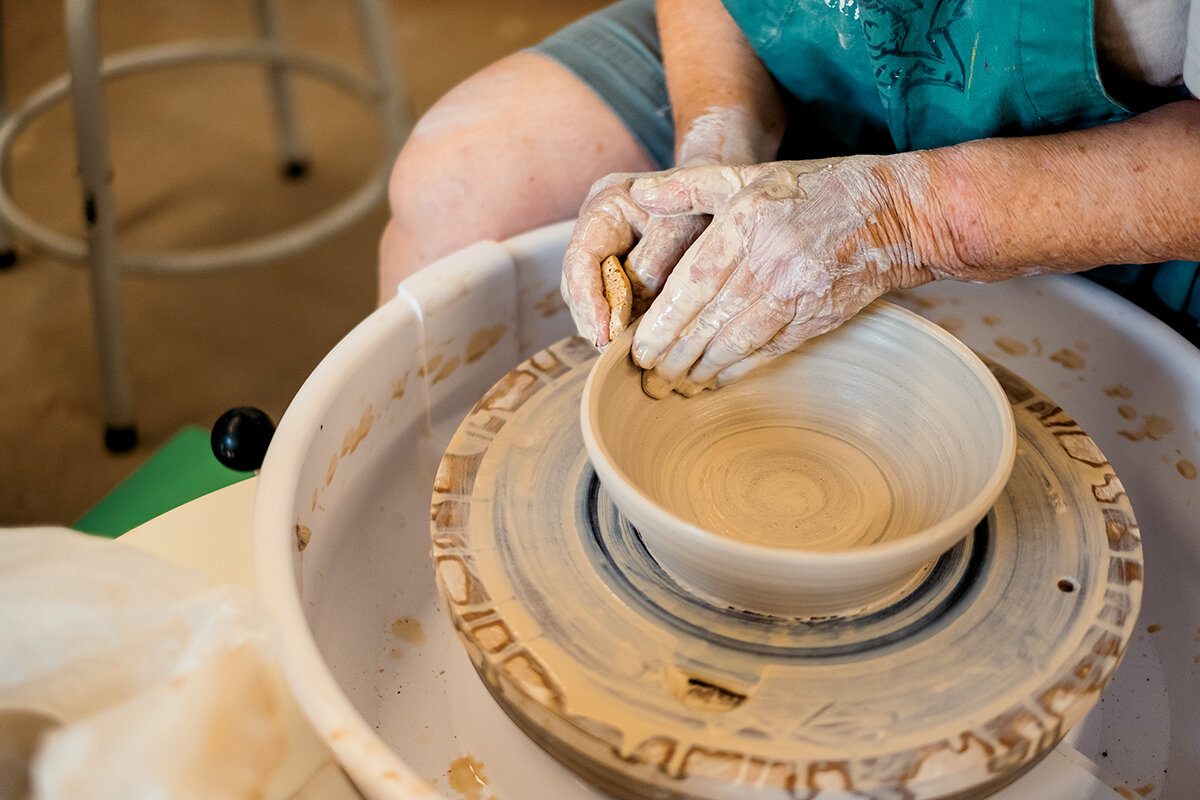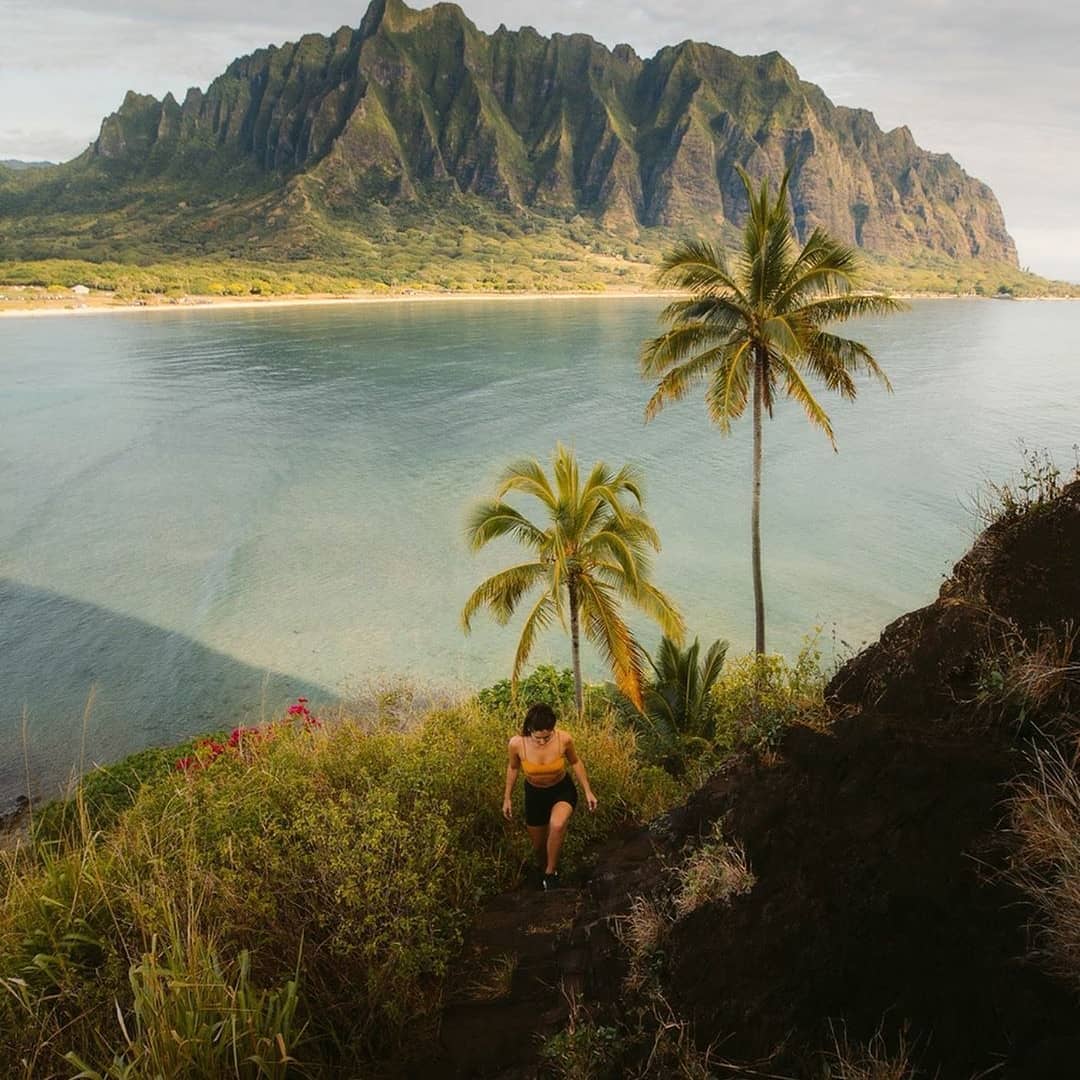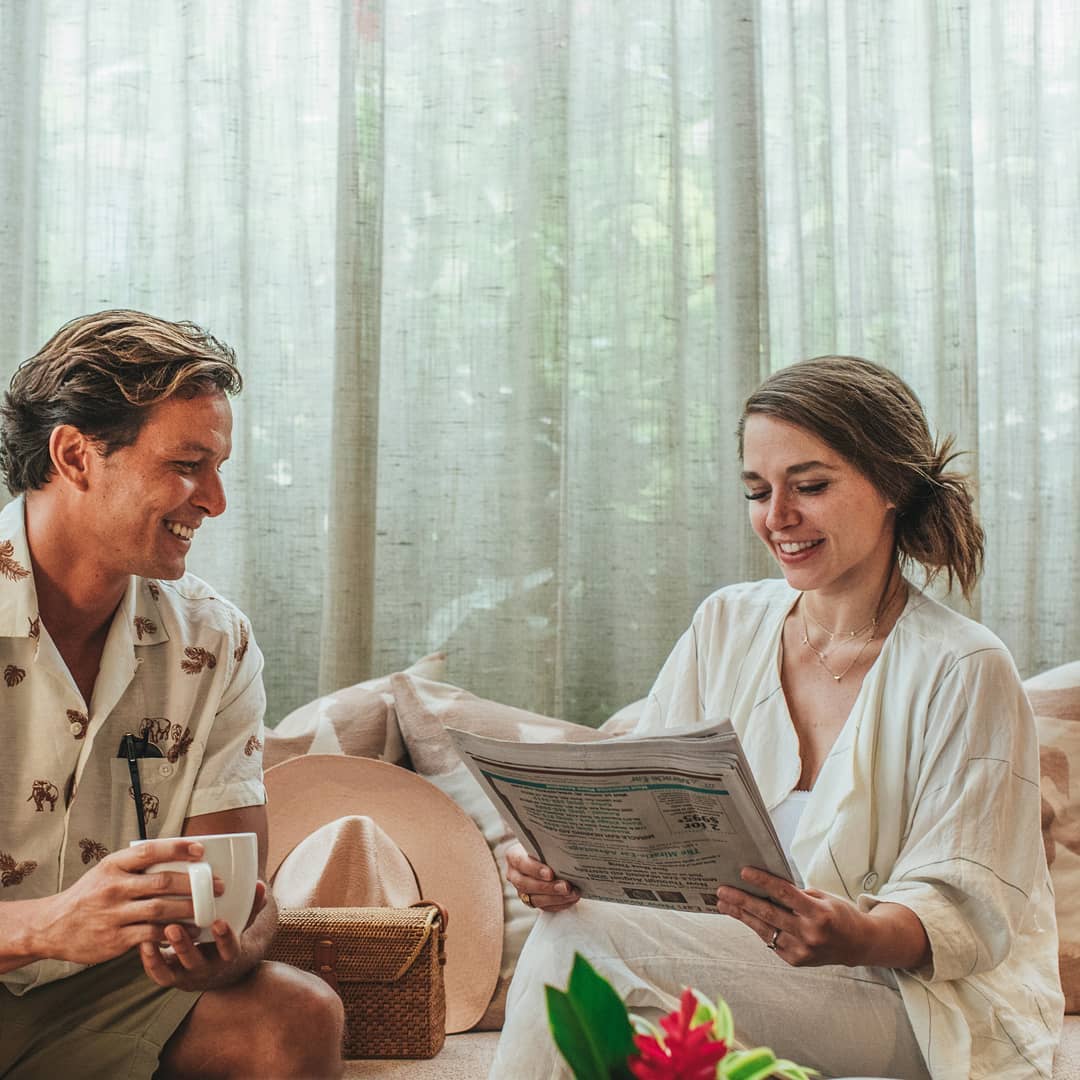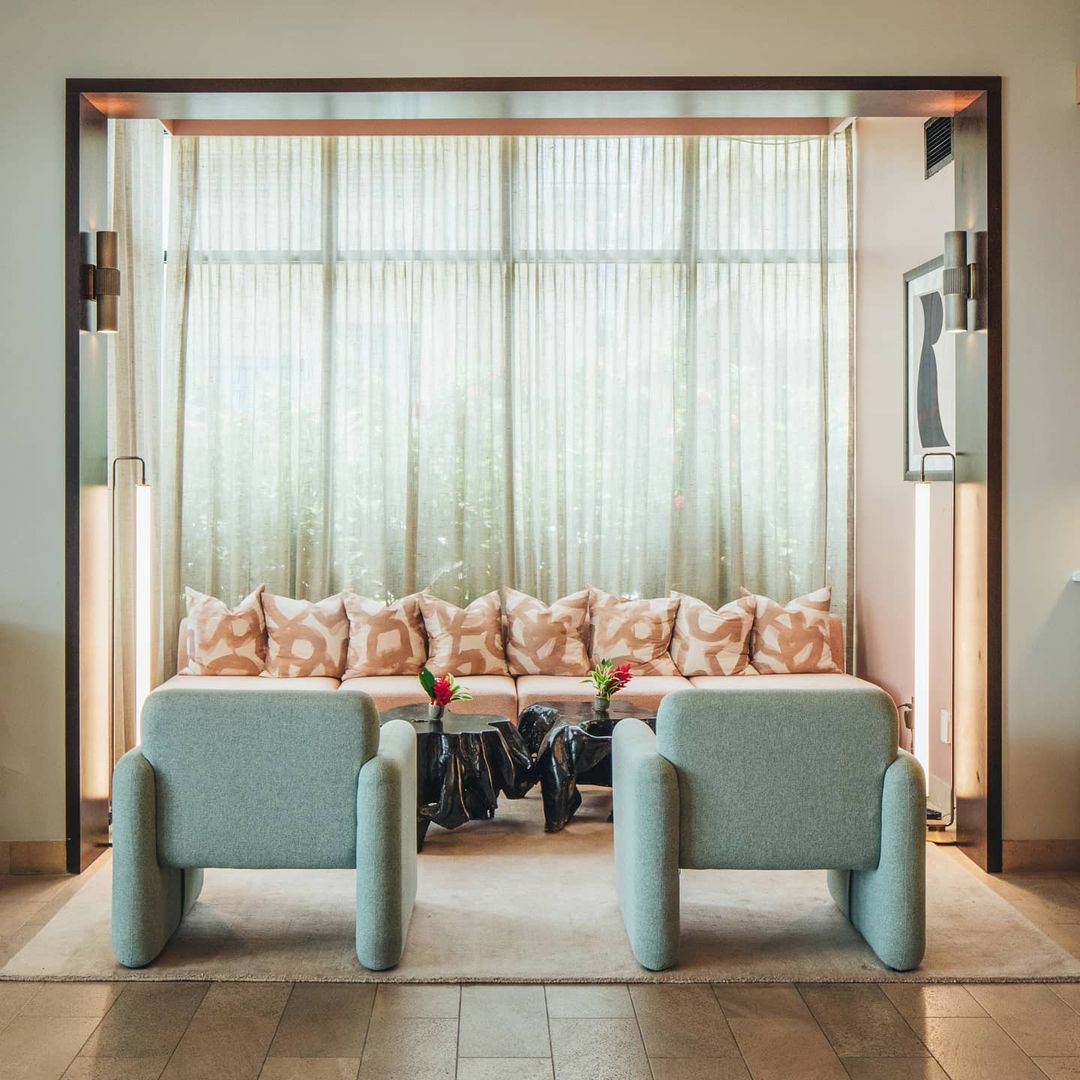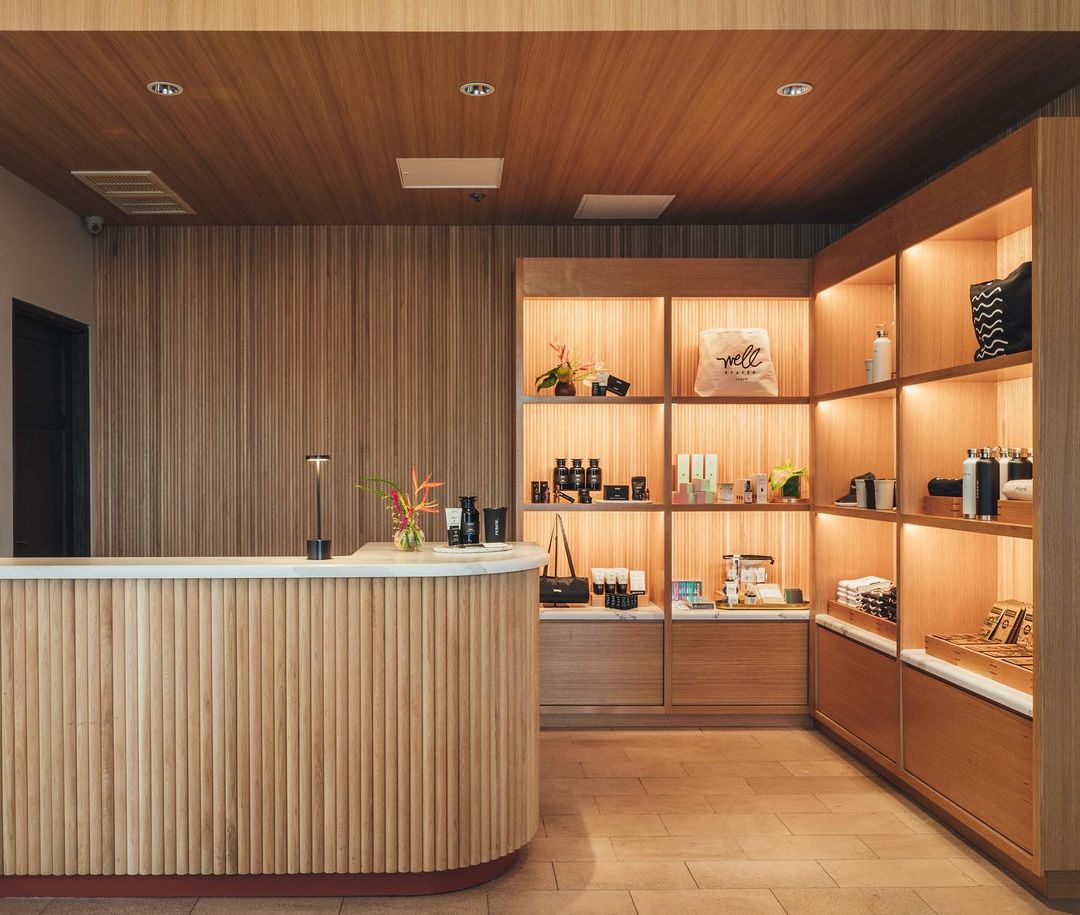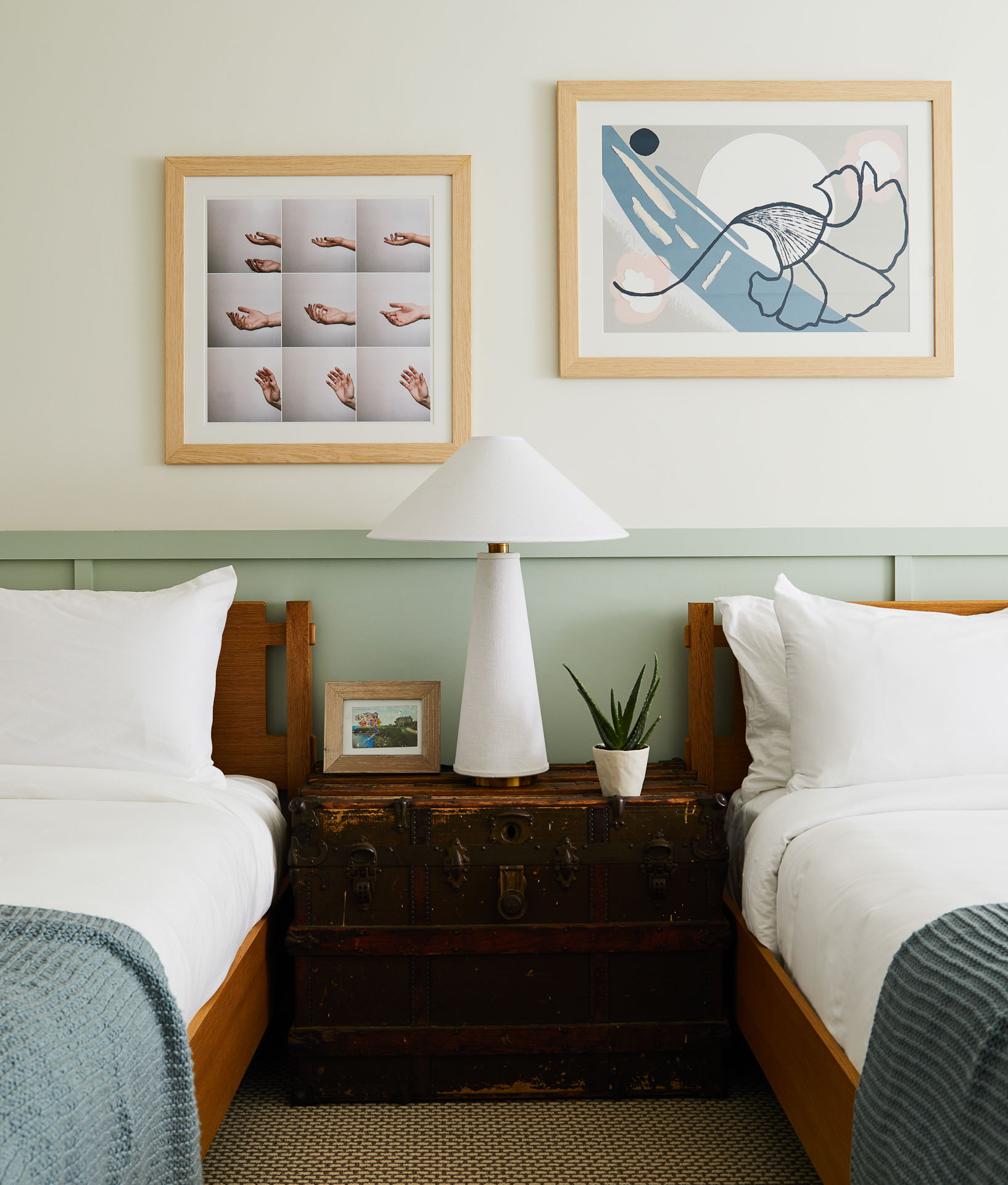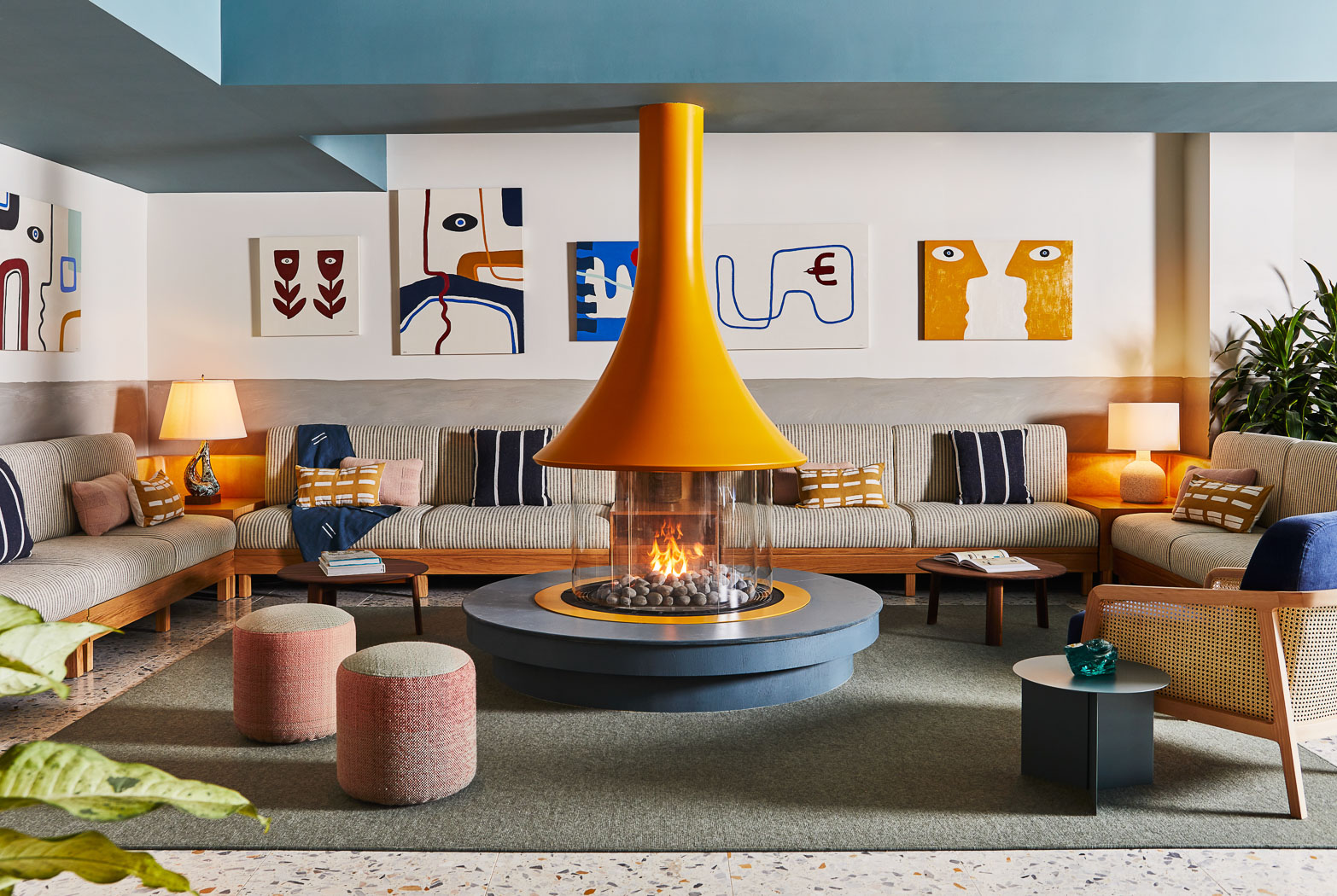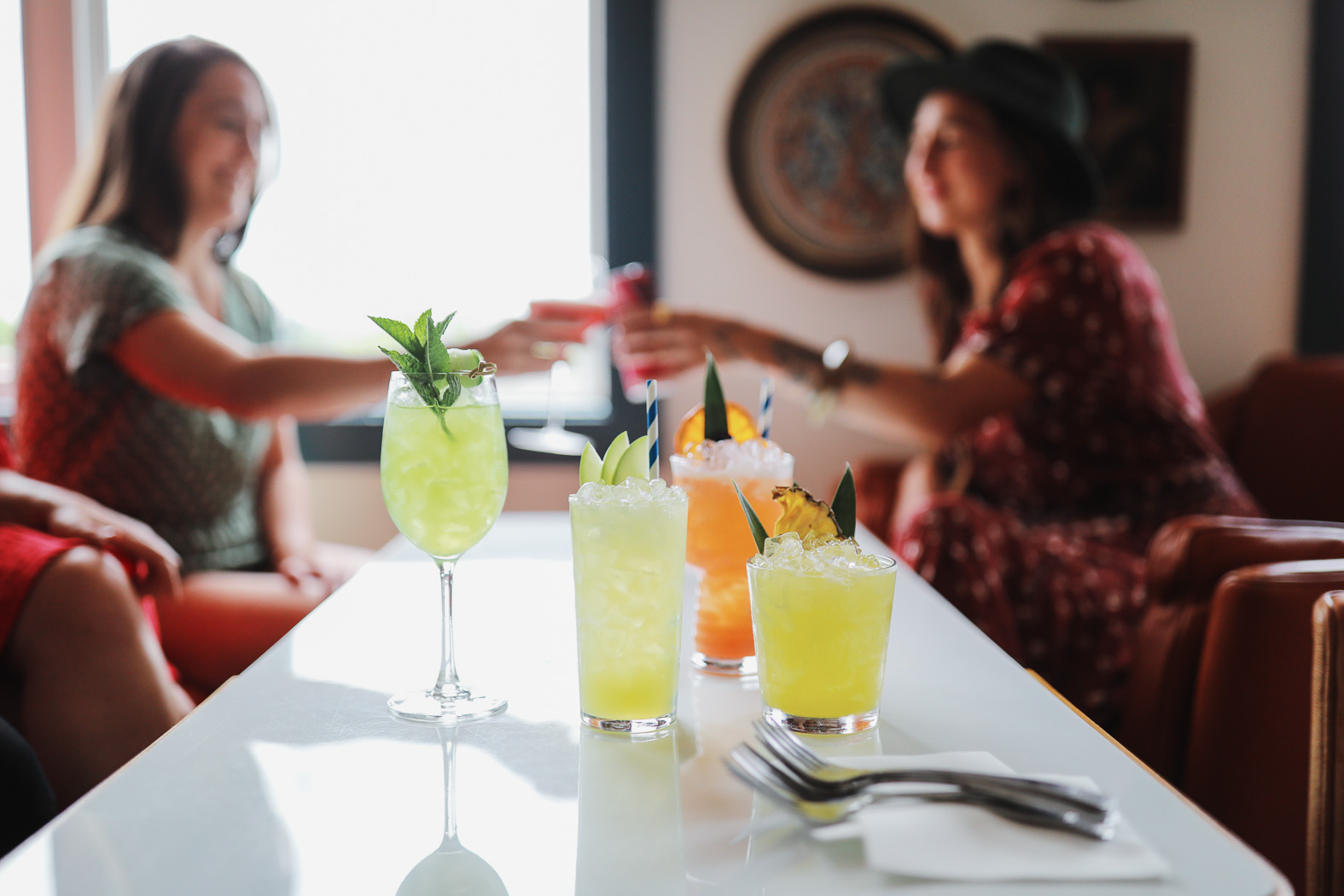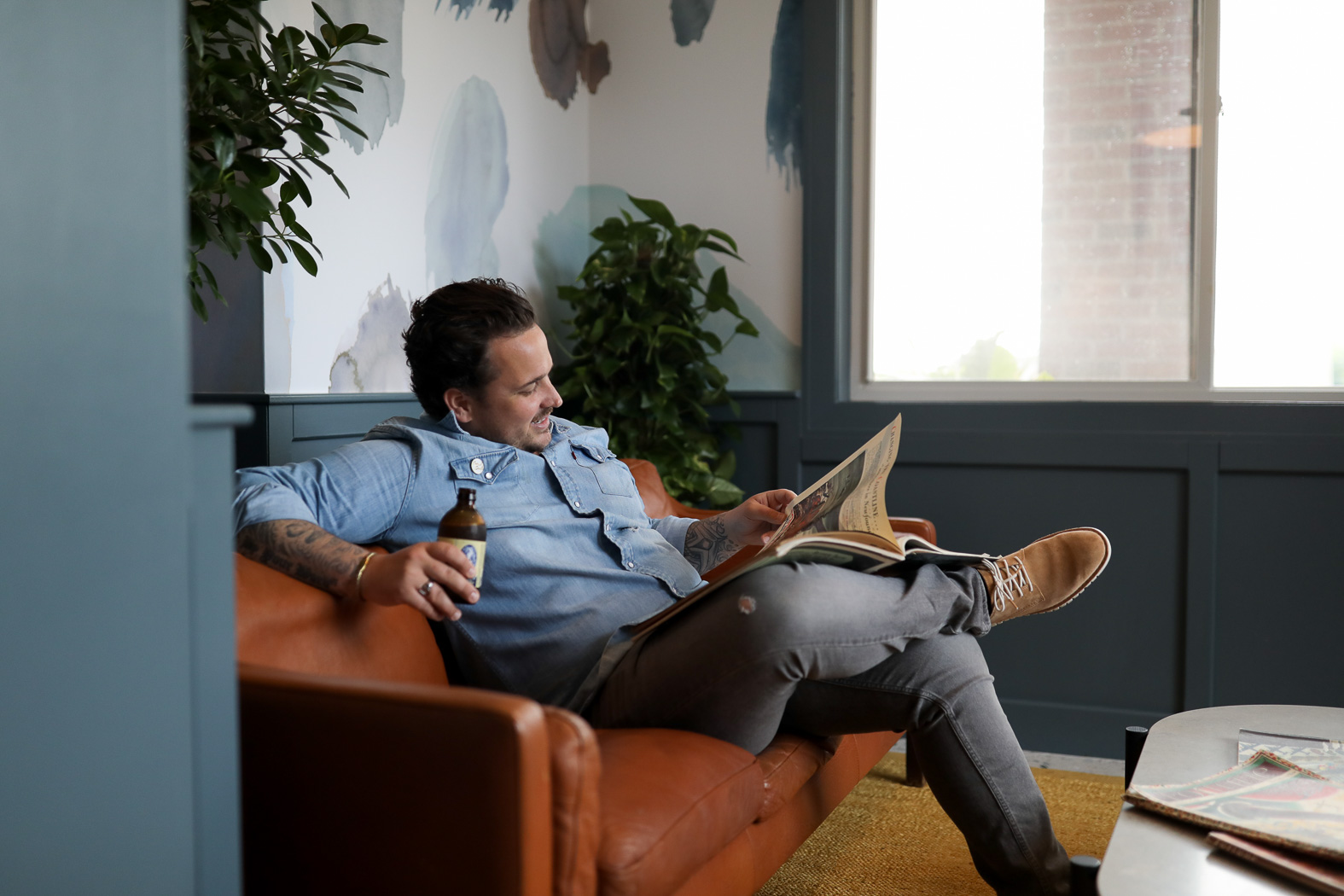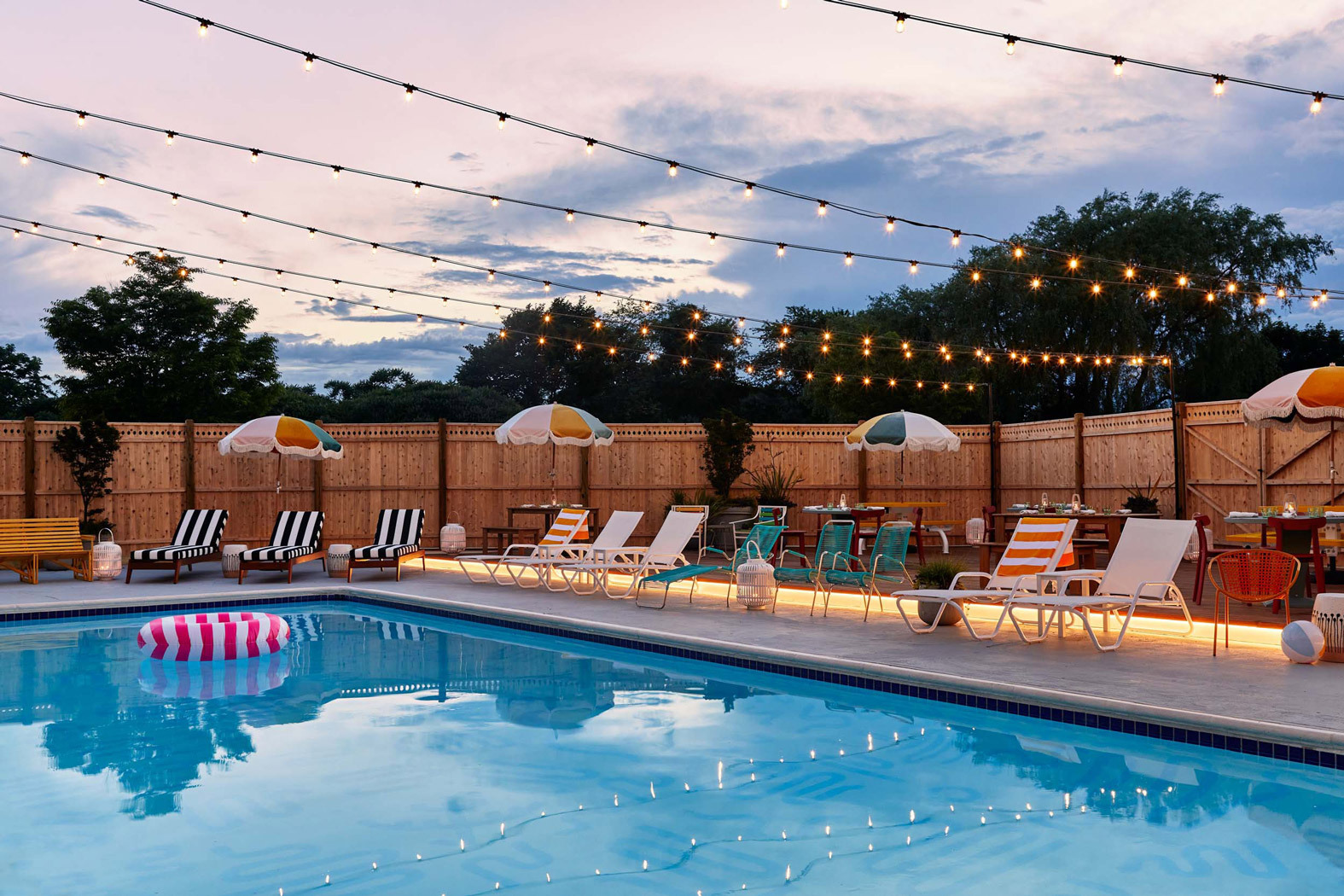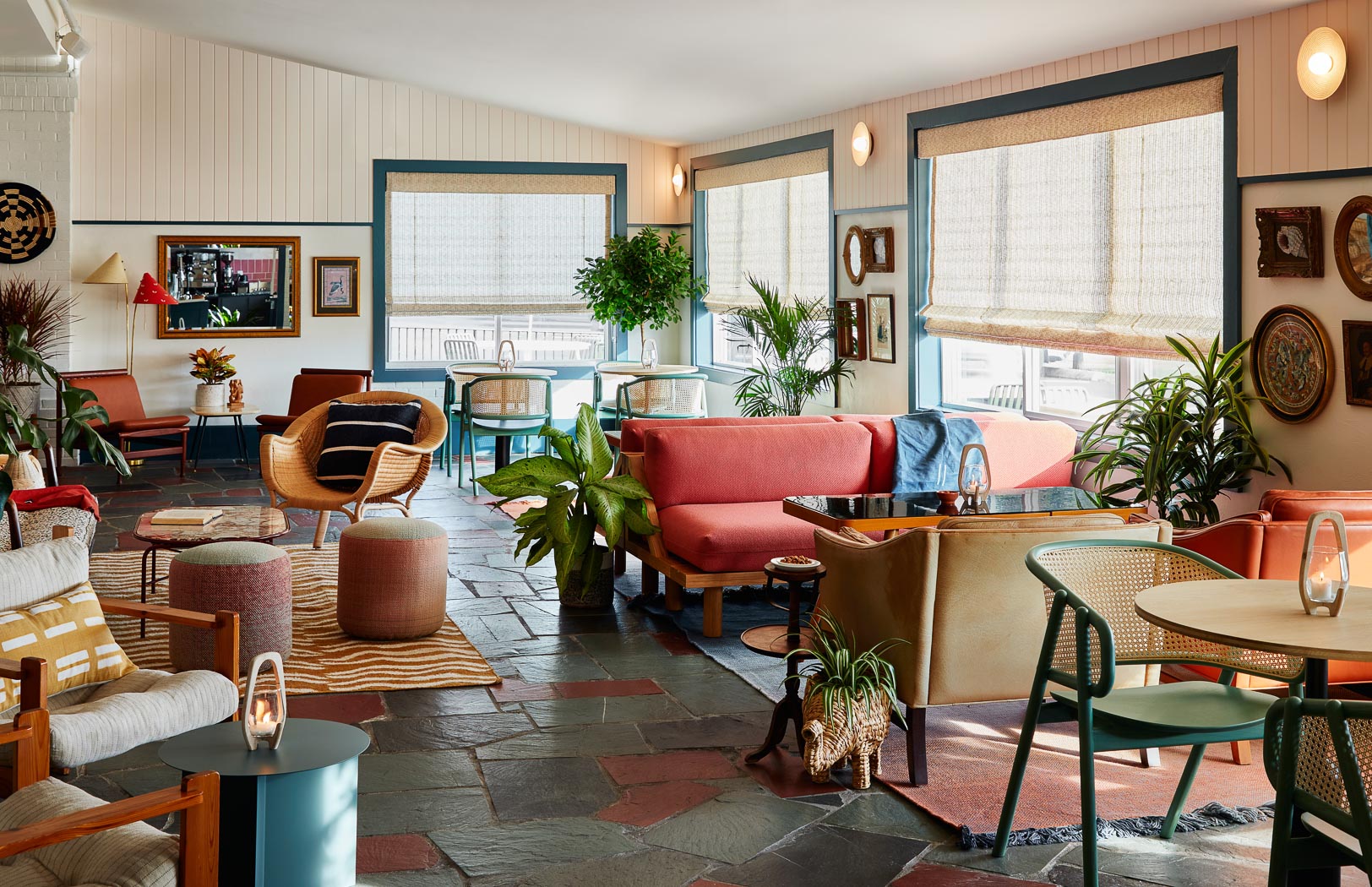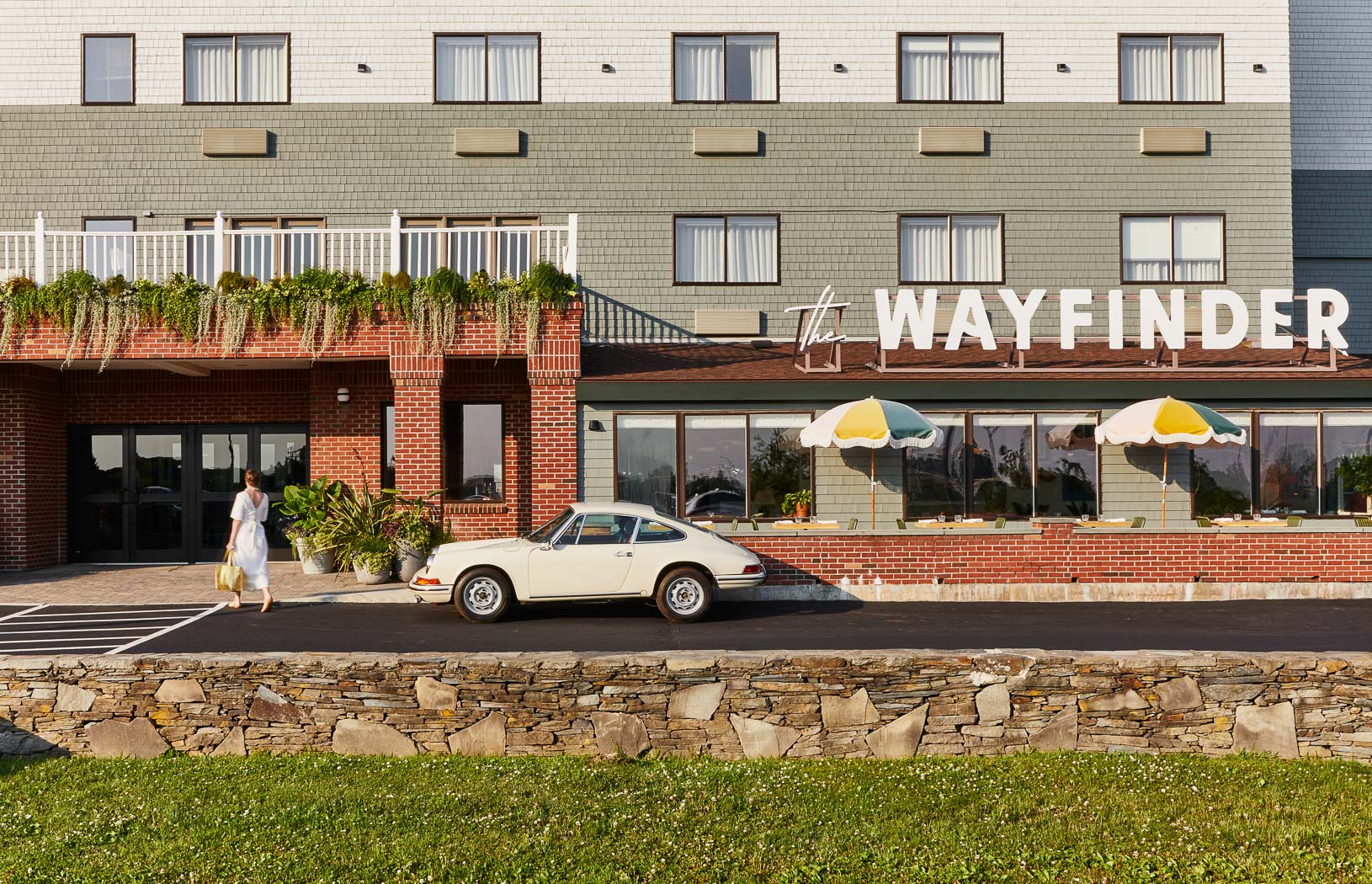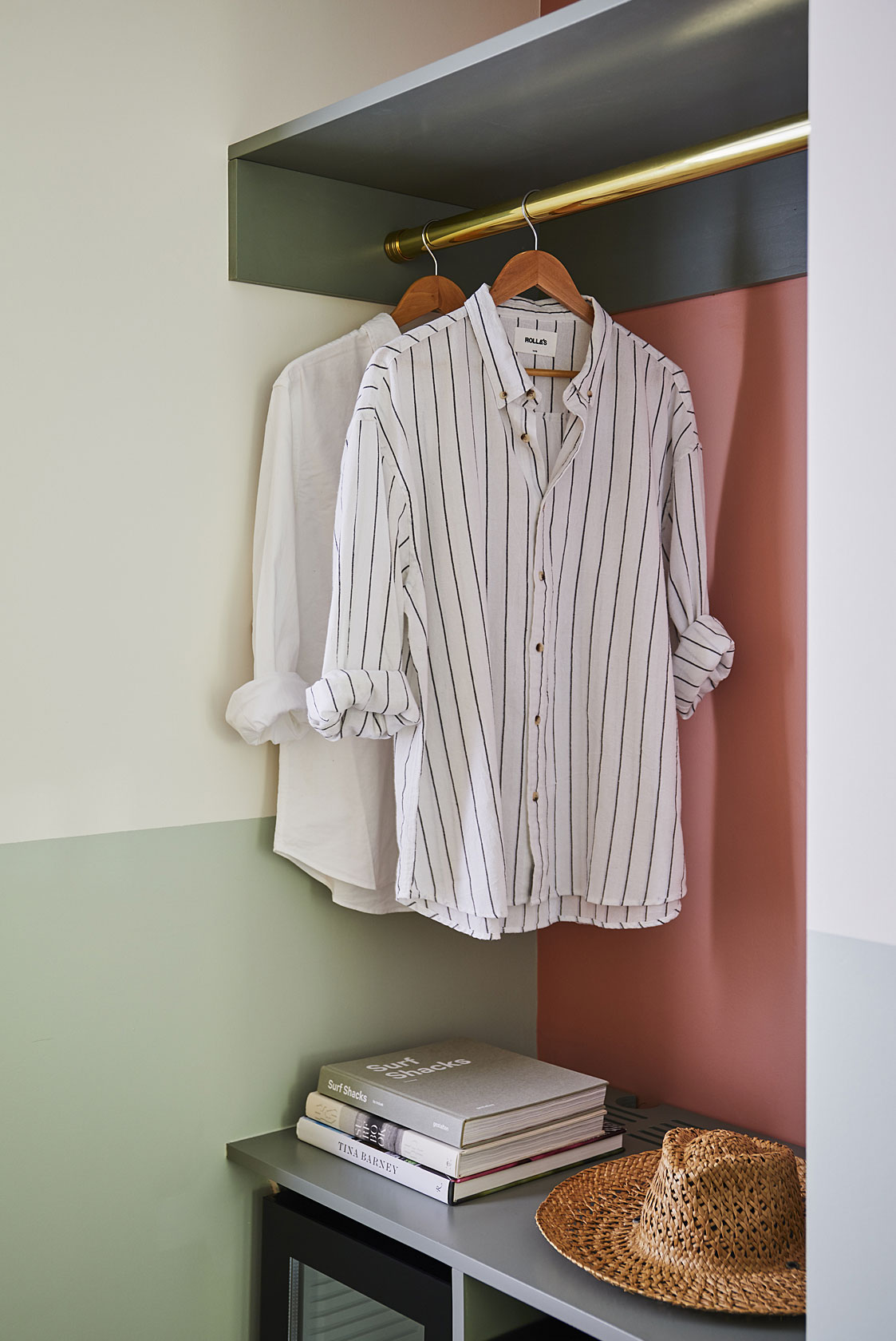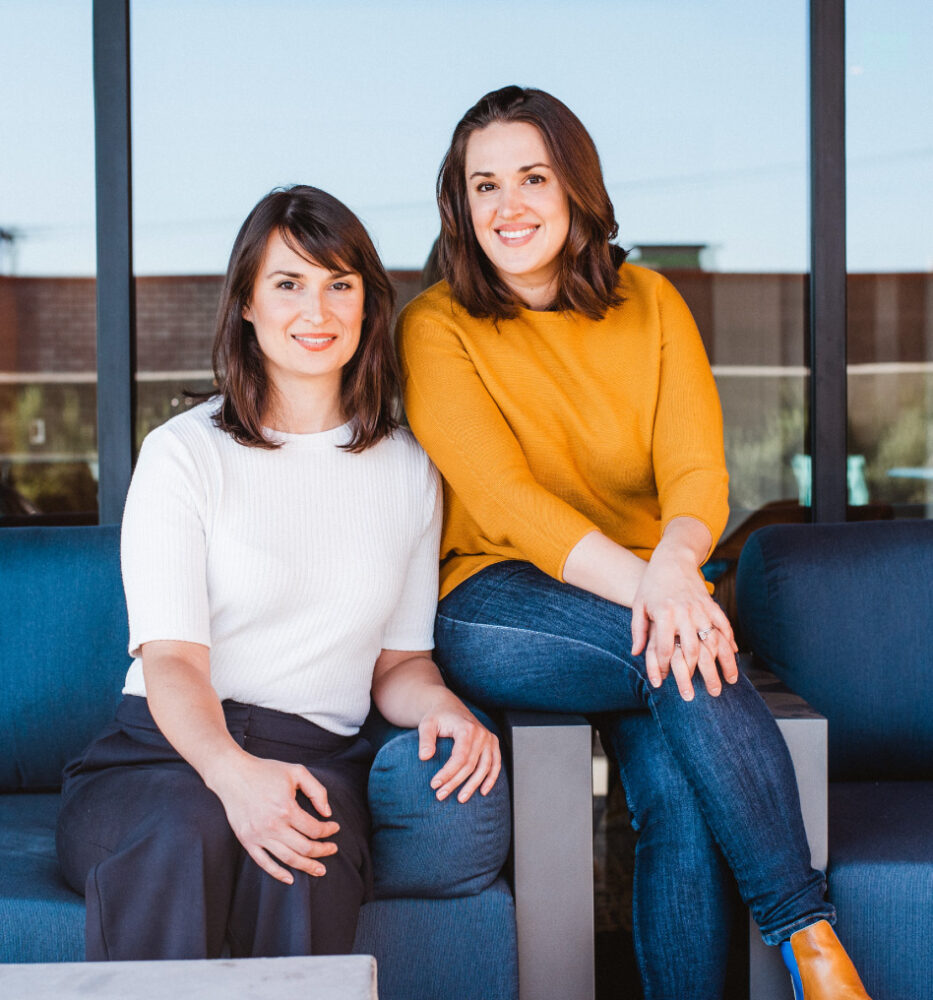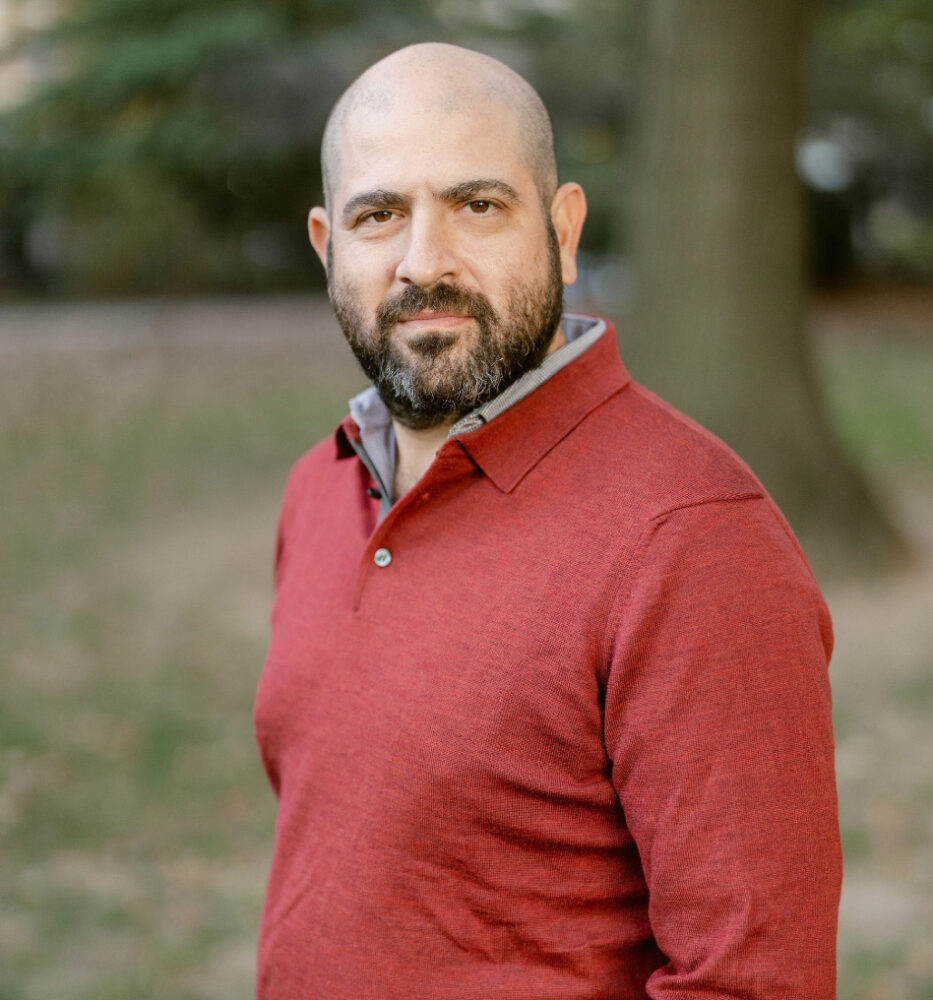Future Hospitality
podcast
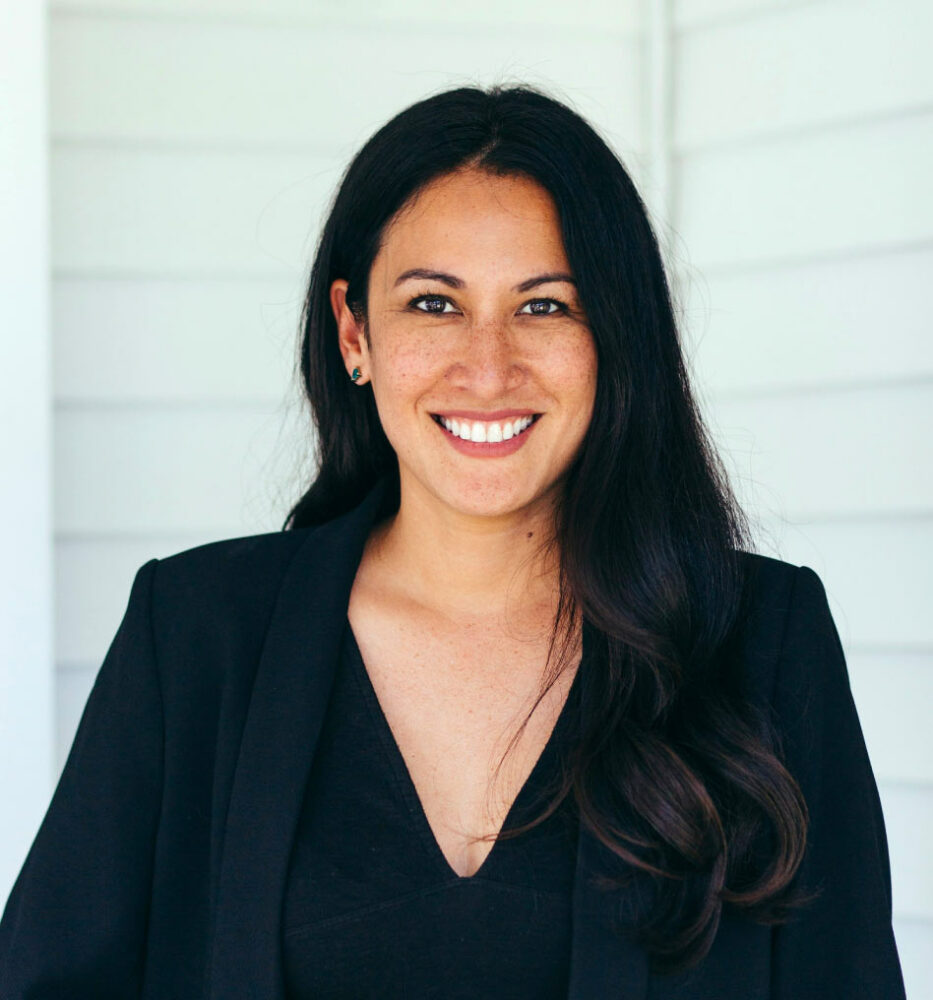
#29: Becoming a Platform for Good with Sustainable Design: Michelle Jaime
July 27, 2021
Dustin Myers: Michelle, thank you so much for joining us today.
Michelle Jaime: Thanks for having me.
Dustin Myers: Yeah. So we’ve been following your work for a little while now and just really love what we’re seeing from the Vanguard Theory. Just for the guests who maybe aren’t familiar with you yet, would you mind introducing yourself, telling us a little bit about you and the Vanguard Theory?
Michelle Jaime: Yeah. We started the Vanguard Theory, actually we just made 11 a couple of weeks ago. So it’s been 11 years. I started it in the middle of the recession in 2009. And it was probably not the best time to start a business, but we did because there were no opportunities. We had to carve out our own. And we started in Honolulu, Hawaii. And it was just me and a friend, a coworker that we’ve decided to start something up. What we did in the beginning is we kind of helped other design firms with their specifications and design sourcing. And at the time, everyone was running lean in their offices. Everyone laid off a lot of their staff. So when they did get a hotel project, they needed help and they knew they could rely on us. So that’s how we started our business really, just supporting other design firms.
What was interesting is we got an opportunity to check under the hood, really, and see how other people operate their business. And through that, we understood how we wanted to really shape our business and what we’d liked about other people’s businesses and how they operated and what we didn’t like and what would be changed. And we saw this opening in hospitality in Hawaii to really be the younger voice. And I think at the time in Hawaii, we had a lot of these legacy brands, a lot of design companies that were doing big flagship hotel designs to design standards built by corporations that have been around for a long time. And so we felt like we could be the younger voice and really designed to boutique hotels.
It wasn’t until 2016, we really got our break in a boutique hotel that we got to show what we could do. We got linked up with the really great clients. Before that, we had some big hotel projects before that, but nobody really cared. And so it wasn’t until 2016 that we got a project that really allowed us to show what we could do as designers ourselves and not under somebody else’s design team.
“It wasn’t until 2016 that we got a project that really allowed us to show what we could do as designers ourselves and not under somebody else’s design team.”
Dustin Myers: That’s cool. That’s an interesting overview of kind of the growth over the last 11 years. I like how you used the term checking under the hood, so to speak. So I think that’s really cool, like stepping stones to where you’re at today, doing this top-level incredible design work. I’d love to hear a little bit more about the journey up until now and some of the challenges maybe you face as your team was growing, as you yourself were growing or opportunities and things that came through that kind of were catalysts for taking to the next place in your journey.
Michelle Jaime: Yeah. I mean, like I was saying, the project that really kind of help us turn the corner was the Surfjack in 2016. We did all the public spaces, which was the pool area, the porte-cochère, the restaurant, and backup house and just really all the activated areas and build-out for the retail space. And we brought in over 20 artists to really help develop the storyline. And I think for us when we were designing it, it was like we were trying to figure out a new story to tell in hospitality design. And at the time, the people that we really looked up to where the Ace group. And I think that they did an amazing job and it really influenced a lot of people on how they program their public spaces and how they put value into public spaces and storytelling. So we looked to really them and some other people in boutique design that were storytelling and that’s how we developed really our foundation of how our perspective of how we design hotels.
Collaborating with different artists can be wonderful. I think there’s more people touching the project. There’s more people invested in the success and layers and layers of stories. But it also can be a total challenge because there’s a lot more people and egos to kind of heard, right? So I think learning through experience, that project was really important and how we kind of operated thereafter. That’s a given now is that we always bring in local artists. I don’t know if it was by instinct or really by strategy that we decided that would really be our niche is to kind of use our platform to help upcoming artists and designers. I didn’t go to business school and I really started the company wanting to just have a seat at the table, really making decisions about design. So learning about business, I was like reading everything at nighttime, like designing a day and just like failing miserably and learning that way about business. But the design part, we always kind of felt confident in.
But today, I think what’s important is not only being a platform for artists and the whole culture of where you’re designing, but it’s really being an advocate for the host culture. And that’s really important to us now as using our design, our platform to give back to the community. And that’s where we are right now.
“I think what’s important is not only being a platform for artists and the whole culture of where you’re designing, but it’s really being an advocate for the host culture.”
Dustin Myers: Yeah, that’s really fascinating. I want to circle back on the 20 artists that were involved with the Surfjack project. What are the different disciplines that were represented through that? And maybe elaborate a little more on how you wrangle all those potential egos and great ideas to align with a single vision and the great final product that we see.
Michelle Jaime: Well, a lot of it started off as like wanting to bring our friends to the party. We have this opportunity to this like really cool hotel and we’re just trying to figure out who’s going to help us make it. So we started off with this roster of artists that were essentially our friends and they were everything from mural artists who did like the murals. As you waited for your elevator, there’s a beautiful tree house by a wooden wave. And those, Roxy and Matt, were our friends.
We also helped patina design that was on the front door and the patina was made by Jason Dow, our next door neighbor at work, and he’s a jeweler. And so he knew how to work with all these different metals. We also worked with Hawaii Potter’s Guild, which one of the people who run the Potter’s Guild is a friend of mine. Actually, there were seven of them that made all the bowls that you eat out of at Mahina & Sun’s. So we went from ceramicists, mural artists, jewelers. We even had vintage muumuu fabrics that we got from one of our favorite shops and that were made into pillows that sat on the big section as you walked in. So there were all kinds of artists.
Jeremy Wells: That’s really cool. Yeah. I love hearing about all that and how you’ve managed to put it all under a cohesive umbrella of the brand and the story and telling that story through the public spaces and the experience. It’s really unique. One thing that just comes to my mind as you’re talking about that being kind of a pivotal project for you and your team, I think back to like projects, even Dustin and I working in the work that we do, there’s been times in the past where a particular client or a project just really gave us room to explore, to create, to innovate in a lot of ways. I love to hear just from your perspective on this particular project on Surfjack. The ownership involved with that, how much trust did they put in you to put that vision together? And can you elaborate kind of on the relationship there between you and the ownership?
Michelle Jaime: Yeah. I think for ownership, most of them are local. And I think that they were interested in having a local narrative being built on the project. But Sean Williams represented the main owner. He really had a great vision of what the hotel could be. And I think storytelling with him and talking stories, he recognized that like a new story needs to be told and he really let us explore what that was. So really having a good client is probably the most important thing and about having a successful design being developed.
Jeremy Wells: Yeah. And was Surfjack kind of the breakout? You mentioned kind of making that transition into specifically hospitality. That’s kind of how you found your niche in that space and boutique hotels, lifestyle, things like that?
Michelle Jaime: Yeah. It was. I think Surfjack was the first hotel that we really got to do as a boutique hotel and to really develop outside of somebody’s brand box. And I think really Surfjack was the first real boutique hotel in Waikiki. When it opened, it was quite a surprise for a lot of people.
Jeremy Wells: Yeah. I would love to stay there someday if I can, but I’m just looking from the photos on the website, it just looks like such a really unique and cool experience. Kind of shifting gears to another one of your projects that you’ve worked on, Renew Hotel, is it Hotel Renew or Renew Hotel? I forget.
Michelle Jaime: It’s Hotel Renew.
Jeremy Wells: Hotel Renew, yeah. And that’s one of Springboard Hospitality projects, right, with Ben Rafter?
Michelle Jaime: Yes.
Jeremy Wells: Awesome. Yeah, Ben was a guest on one of our past podcasts too. So it’s cool to have this connection and I know that we’re all kind of getting intertwined at this point, but I know Jason Cutinella introduced us to you and finding out that you did work with Springboard and that’s really cool to see it all kind of puzzle pieces tied together.
Michelle Jaime: Ben was one of the owners of the Surfjack. So that’s how I really got to start to work with Ben and then we’ve developed a couple hotels since then. So when we just opened up called White Sands Hotel, which is another really fun, local story that… I mean, it was a great group of fun people to work with too. And you can tell when you walk around the hotel that it was fun.
Dustin Myers: Yeah. That’s really cool. Looking forward to seeing it. I wanted to unpack something you mentioned earlier about host culture. Explain more what you mean by that and how you’ve seen that implemented in different projects.
Michelle Jaime: Well, I mean, we develop a lot of hotels in Hawaii and I’m born and raised in Hawaii. And I think for most local people, there’s anti-development sort of sentiment in here. And I realized I’m part of the problem. I’m helping develop hotels, which can be really known for not locals. It’s meant for tourists and nobody loves being labeled a tourist. But I think it’s important for us to give back to the host culture being, for me, when we’re developing Hawaii, it’s to the Hawaiian culture. I mean, historically, Hawaii is known for being a great hospitality leisure market. We’re also very hospitable. We take in about 10 million tourists A year, which is a lot for a little island, little islands.
“We developed a design that had a small footprint.”
So when we were developing Hotel Renew, we felt that it was our responsibility to give back to our host culture. And what we did was we developed a design that had a small footprint. We audited every single room and made sure that we kept what was salvageable or we added like countertops to them, but we made some repairs, we upholstered some items, but really tried to minimize our footprint because we have to ship everything in to the middle of the Pacific and that really consumes a lot of waste and energy.
So we not only made sure our footprint was small, we brought in local artists and local food and beverage purveyors to develop that program, as well as all the goodies that you see in the retail area, like all the swag, like the sunscreen. All the goodies are all local. So that was really important to us. And then the last thing was we paired up the hotel with a nonprofit called Travel2Change. And we felt that the concierge part of a hotel is really broken. That needs to be disrupted full on.
So instead of you going down to the concierge and saying, “Hey, what can we do in Hawaii?” And they send you off to a banana boat ride or parasailing, which has nothing to do with Hawaii, they will link you up with a company that would take you out to the Windward Side of Oahu and you’re rebuilding the He’eia fish ponds and you get to see parts of Oahu that you would probably never experienced as a tourist, but you also learn about the culture and you’re giving back. So it’s a win-win situation.
There’s other things that they can take you out hiking to places and you’re removing invasive species and planting native species. So it’s really this exchange of being a great guest and a great host because we see it as you’re going over to your auntie’s house and she’s cooking for you every single day, you come and visit, but if you don’t bring something, then auntie is probably not going to serve you anymore and get upset. So it’s this really beautiful exchange of the tourist and the host that we’re trying to build.
Dustin Myers: Yeah. And I love seeing within the projects and the people we’ve talked to, I wouldn’t call it a trend. Maybe more of a resurgence of just responsible tourism and kind of getting away from just coming in and eating up resources and then leaving damage in your wake, but like you’re talking about really connecting with the people there and with the environment and just a much more healthy exchange through the travel process.
Michelle Jaime: Yeah. I mean, I think having a great client being open to those sorts of things is like the most important step because you can try to sell this idea and if they are rigid and won’t be flexible to adding, I mean, this is for a client to add this into their operating plan is to have like a third party or like change up your concierge. Like a lot of people, it’s easier to copy and paste what they do. And so this is a big pivot, especially a big response to what happened in 2020 is finding purpose and a deeper meaning.
“I think people want to align themselves with companies who reflect who they are as people and where they want to put their money”
And there’s certainly a rise of the conscious consumer. And I think people want to align themselves with companies who reflect who they are as people and where they want to put their money. And I think it’s important for hotels to be a part of that conversation. I mean, we certainly see it in fashion. The one for one, sort of the transparency of where your factories are and how your employees are treated. So yeah, hotels are responding to that and we feel that it’s our responsibility as designers to really have a conversation with the clients if they’re not thinking about it already.
Jeremy Wells: Definitely. We had a conversation with another podcast guest, Mona Lewicka, with The Transformational Travel Council. And she used the term that I loved and the way that you approach this project with Renew is just like spot on. And she said, “Trying to promote the why and how instead of the what and where when it comes to travel.” She called it kind of revitalizing the purpose and sustainability with travel. And I think you guys are doing a great job of that.
And I think it’s really interesting. Obviously, you guys do like really incredible design work and the work that you put out is really phenomenal, but it’s really interesting as you tell that story. There’s obviously a lot of different interior design and creative agencies out there and you guys do that really well, but you guys are almost bleeding into other areas that are beyond just furniture, fixtures, and design of aesthetic. It’s actually designing the experience and designing the operational standards for a hotel. And I think that’s really neat, I guess, the jump that you’ve made into that through the years. Would you agree with that? If so, is that just kind of come naturally or did you intentionally do that?
Michelle Jaime: It was always our goal to be outside of interior design. And you’re right, we’re not the typical interior design studio. We creep into branding and we keep into product design. And I think we see ourselves really being a storyteller. So we’d like to develop a story and see it all the way through. And we don’t see hotel design as being static where we design and do our part. And then we show up at the party and then everyone walks away and it’s done. It’s important for us to have partners and clients that we’re proud of what the hotel looks like five years later and that we’re part of a team that built that.
I mean, to answer your question, it happens naturally. Especially when the Surfjack happens, I think a lot of people look to us as a younger voice and really as a connector to the community, to the art community here in Hawaii. And we’ve obviously done projects beyond like in Nashville and Denver and that’s one of the first things we do is we go, “Okay, we’re not going to just tell our side of the story. We’re going to connect with the local creatives and have them help us develop a story.” And I think through that collaboration, it just naturally happened where we realize that its design is beyond just the static. Design is like developing the whole narrative of a place. I think our clients like gave us the opportunity to develop more and more. That’s just happened naturally.
Dustin Myers: Yeah. I think it’s a really cool evolution. You can’t really just have one aspect of it, like great branding is going to influence operations and design. Great interior design is going to influence so many other aspects. So I love to see when people really embrace that and aren’t afraid to color outside the lines and just make sure that the story is told through accurately across all the different touchpoints. And I feel like it’s kind of rare to see that, but when it does actually happen, it’s just such a treat.
Michelle Jaime: Yeah. I don’t want to make like that we’re one-stop shop because I think we’re small and there are seven of us. And I think that one of our strong points is that we collaborate really well with others. So when we develop the story, we have this strategy in mind that we’re going to only take it so far and then we have to collaborate with other people. So there’s great branding teams that we’ve worked with to help us connect all the dots. But overarching creative comes from us and we’ve really built this great team of people who come and help us execute a great storyline.
Dustin Myers: Yeah, that’s really cool. Talking previously, it sounds like things are getting very busy for you guys, kind of post-pandemic people start to restart projects and move forward. I’m curious, what projects you have going on right now that maybe you could give us a peek into?
Michelle Jaime: Yeah. So like I mentioned before, we have White Sands and we worked with Ben Rafter and Christian Strobel on. Springboard is also operating that one. And that one, we were supposed to open, but the pandemic hit. And so it’s been opening piecemeal, but the public spaces are finally opening up and it’s just a really, really fun hotel. We activated the lobby with like a fun thatched roof, a bar with swings around it and fringed umbrellas around a coffin shaped pool. And it’s a little bit of old Hawaii, which we try to envision, like Don Ho drinking a Mai Tai at the bar. So kind of a little swankier version, maybe a grittier version of Waikiki back in the day. So that one is just opening.
We’re working with the Dovetail Group. Dovetail & Company, on another hotel in Waikiki. It’s the Wayfinder Waikiki. And we’re in the middle of the design right now. And that one is a tropical brutalist hotel, which I think people either love or hate brutalism, but we’re going to try to make you love it.
Dustin Myers: That sounds amazing.
Michelle Jaime: We think our baby is beautiful.
Jeremy Wells: You’re speaking Dustin’s language right now with the brutalist design.
Michelle Jaime: Yes, we got one. I know, people either love or hate brutalism and I love it. It’s so weird. It’s so out there, but there’s so many brutalist buildings in Hawaii and we have our own tropical brutalism, so we want to make you love it, but that’s a hotel that we’re doing. We’re doing like the pool area, the restaurant, the bar, the retail, the coffee experience, we’re doing it all. And it’s a lot of work, but it’s so much fun. And the Dovetail Company, they’re fired up because they’re a newer company and they have a couple of projects that they just opened, and this one, they’re really excited about.
So we’ve been working hard on that one and then another one we’re doing is a bar in Waikiki. That one’s insane. So I’m not sure if I’m allowed to say the name yet. Or if you can imagine if Willy Wonka and Alice in Wonderland had a baby, it would be that trippy experienced. So I mean, it might give you vertigo when you walk in because everything is so trippy, but it’s going to be really fun.
Jeremy Wells: Yeah, that sounds like it. That’s awesome.
Michelle Jaime: As you can tell, like I’m not really mature at all. So this is how I get my experience. It’s not the beautiful presentation of how the story has started. It’s literally what makes me laugh. That’s how the storyline starts.
Jeremy Wells: That’s awesome. That’s so cool. So the podcast is called Future Hospitality. Towards the end, we typically like to just ask, looking ahead into the horizon and especially after all as we near the end of the pandemic and come out of that, what are some things both maybe personally and professionally for you that you’re excited about when it comes to the hospitality industry and the hotel industry? And kind of what are you looking forward to maybe in the next year, five, ten years plus? And is there anything that inspires you?
Michelle Jaime: Yeah. I mean, I’m listening to some of your guests really inspire me. I think what I’m looking forward to and what I’m happy to be a part of is the change in hospitality becoming a platform for good. And what I mean for good is to provide deeper meaning for the guests and so that even the workers at the hotel feel like they’re doing something good for their community. I think hospitality is certainly going to change in how they operate. And I hope that they do this themselves and that they don’t wait for the city or the state to make this a requirement. But I feel like that we’re changing for the better. It needs to be disrupted. And it sounds like things are changing and that people are making this change of changing the way they operate. And I’m really excited to be a part of that change.
Dustin Myers: Excellent. Well, we’ve certainly enjoyed seeing what you’ve done so far and can’t wait to see the projects that are in the pipeline and going to be coming out. I’m going to book tickets to see that brutalist tropical hotel as soon as I can. So thank you so much for joining us.
Michelle Jaime: Thank you for having me guys.
Dustin Myers: Yeah, really enjoyed just getting to learn more about your process and what makes you tick. And I think the hospitality future is bright.
Michelle Jaime: Thank you.
Jeremy Wells: Thanks, Michelle.
